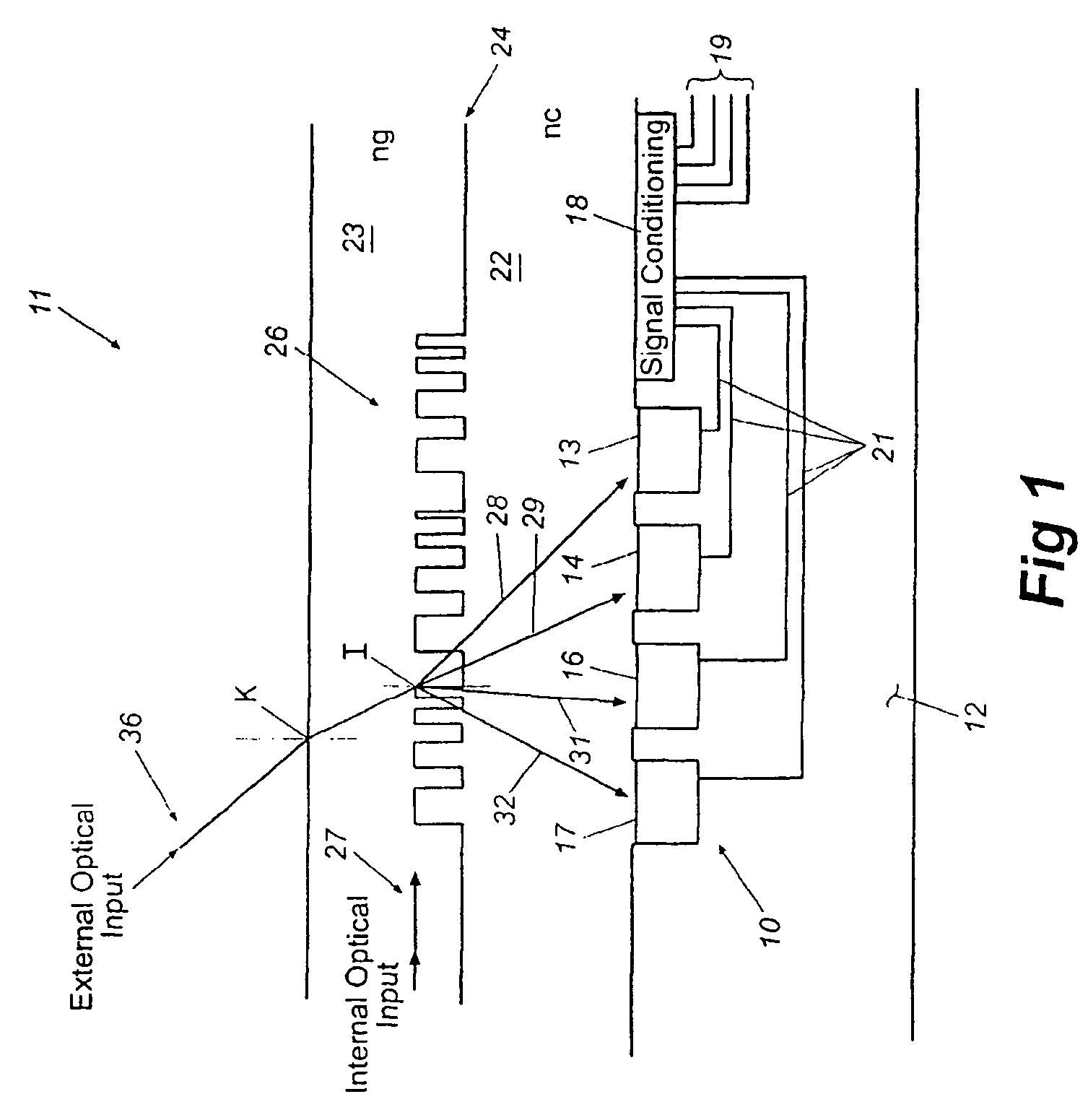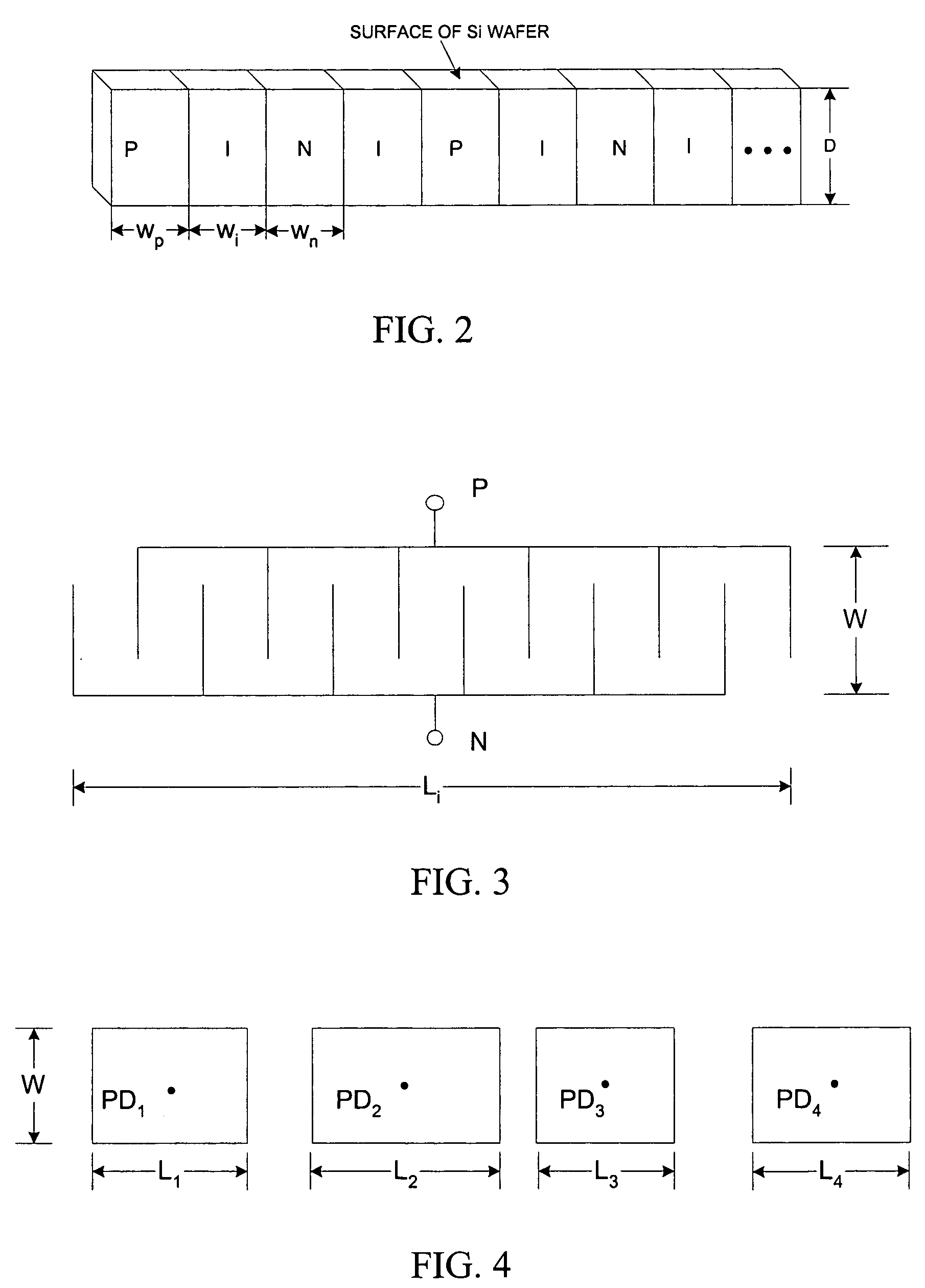Integrated optical multiplexer and demultiplexer for wavelength division transmission of information
a wavelength division and information technology, applied in the field of wavelength division optical transmission of information, can solve the problems of increasing the delay of interconnection, the large size and bulkiness of optical multiplexers such as those disclosed in the above patents, and the rapid development of interconnections formed of conventional electrical interconnections and switching technology, so as to achieve faster data throughput and high-intensity optical signals.
- Summary
- Abstract
- Description
- Claims
- Application Information
AI Technical Summary
Benefits of technology
Problems solved by technology
Method used
Image
Examples
Embodiment Construction
[0031]The following description of the present invention is provided as an enabling teaching of the invention in its best, currently known embodiment. Those skilled in the relevant art will recognize that changes can be made to the embodiments described, while still obtaining the beneficial results of the present invention. Accordingly, those who work in the art will recognize that modifications and adaptations to the present invention are possible and may even be desirable in certain circumstances, and are a part of the present invention. Thus, the following description is provided as illustrative of the principles of the present invention and not in limitation thereof since the scope of the present invention is defined by the claims.
[0032]Referring now in more detail to the drawing, FIG. 1 illustrates an integrated optical demultiplexer that embodies principles of the invention in a preferred form. It will be understood that the figure includes only the very small section of a mic...
PUM
 Login to View More
Login to View More Abstract
Description
Claims
Application Information
 Login to View More
Login to View More - R&D
- Intellectual Property
- Life Sciences
- Materials
- Tech Scout
- Unparalleled Data Quality
- Higher Quality Content
- 60% Fewer Hallucinations
Browse by: Latest US Patents, China's latest patents, Technical Efficacy Thesaurus, Application Domain, Technology Topic, Popular Technical Reports.
© 2025 PatSnap. All rights reserved.Legal|Privacy policy|Modern Slavery Act Transparency Statement|Sitemap|About US| Contact US: help@patsnap.com



